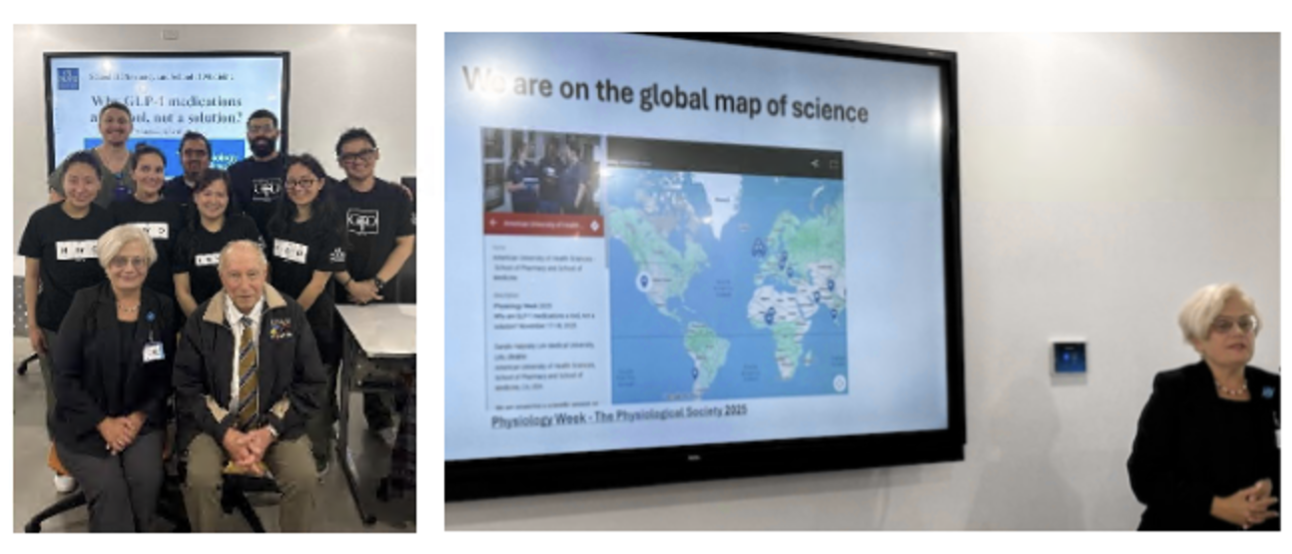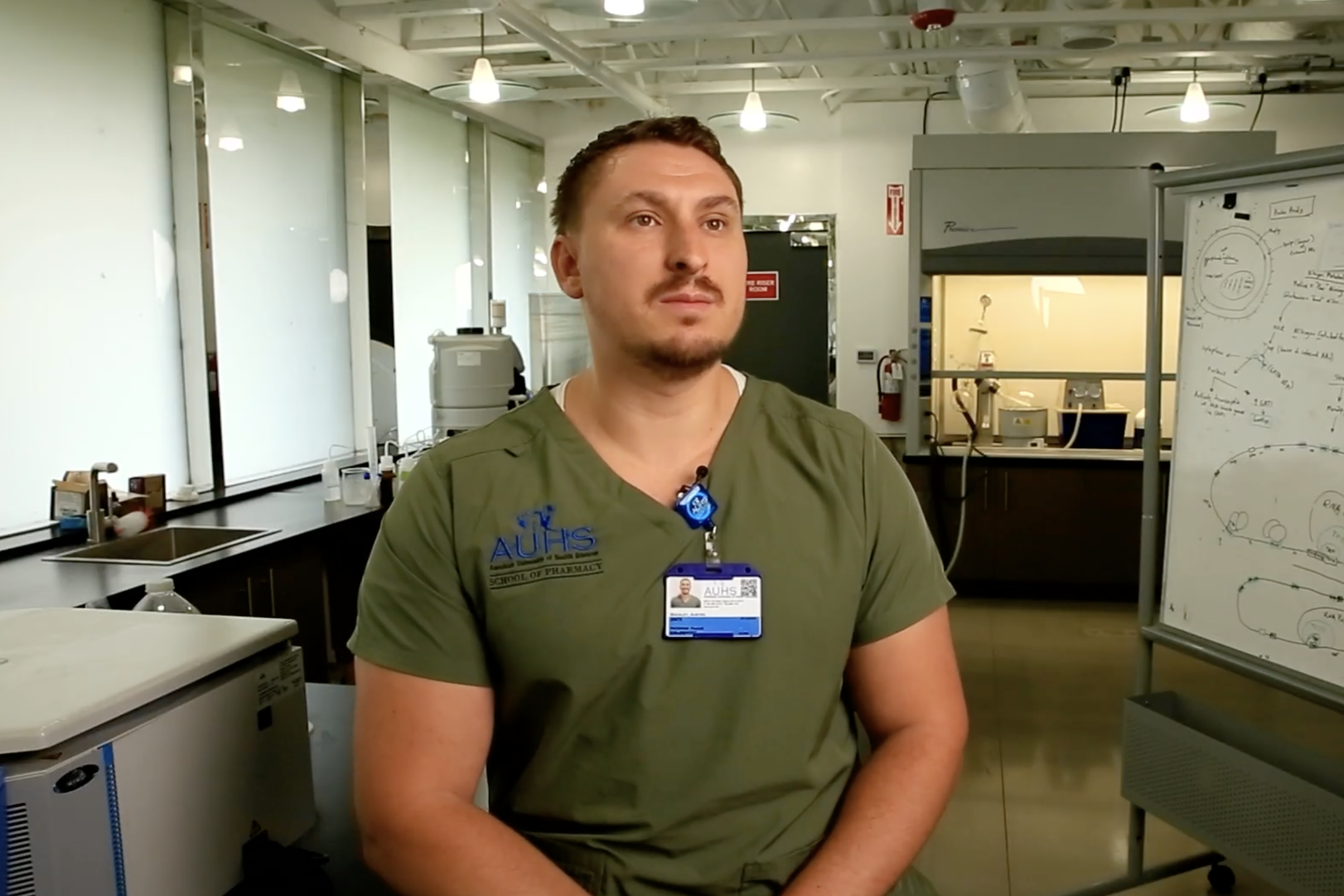From Drugs to Nutraceuticals: How Things Work
John Schloss, Ph.D.
How does someone with a focus on designing drugs and other biologically active molecules develop an interest in nutrition and nutraceuticals? It is easy, really. Successful drug design requires an understanding of the chemistry of enzyme and receptor interactions with small molecules, along with a detailed knowledge of biochemistry, biosynthetic pathways, and a detailed understanding of the pharmacology of drug-enzyme and drug-receptor interactions. The importance of different classes of enzyme cofactors (organic and inorganic), the types of chemistry they are essential for, and how they all fit together, is crucial to the successful design of a new drug. The essential cofactors necessary for the chemistry of life —those that are essential in the diet and cannot be made by humans —are vitamins, precursors for enzyme cofactors, and minerals.
With a solid foundation in the biochemistry of various pathways targeted by different drugs and agrochemicals, combined with more than 20 years of participation in the Enzymes, Coenzymes, and Metabolic Pathways Gordon Research Conference (a selective meeting attended by 100 of the world’s leading scientists in enzymology and biochemistry), anyone can begin to understand the how and why of nutrition. A chance encounter with the inventor of a robust method for assessing subclinical nutritional deficiencies (i.e., those not resulting in an obvious disease state) completes the missing link in connecting modest dietary insufficiencies with disease progression and the failure of drugs to treat a disease state effectively.
With this kind of background, you begin to see why different deficiencies present their corresponding symptoms. You also begin to predict the consequences of dietary defects that have yet to be recognized. The best label for research into the details of nutrition and the role that diet plays in health and disease is mechanistic nutriomics.
Here is a definition:
Mechanistic nutriomics: understanding the ‘how’ behind nutrition. In essence, mechanistic nutriomics bridges the gap between simply observing that diet affects health and understanding the precise molecular machinery and cellular responses that drive these effects, paving the way for a new era of personalized and preventative nutritional approaches.
Mechanistic nutriomics is only one component in a portfolio of modern research approaches to precision and individualized medicine. My own interest in mechanistic nutriomics is a direct extension of my early work in mechanism-based drug design. Also included in the faculty research interests of any contemporary health sciences effort are pharmacogenomics, biomarker discovery to support early therapeutic interventions (especially in the area of cancer), cellular immunology (e.g., checkpoint inhibitors and autoimmune diseases), along with traditional areas and disciplines that continue to contribute to a holistic approach to health care. This article will focus on my own evolution from drug design to mechanistic nutriomics.
In DuPont’s Central Research Department, my research focus was on mechanism-based drug design (Schloss, 1988; Schloss, 1989). During this time, I was able to conceive of, synthesize, evaluate (in vitro), and participate in testing new biocides (e.g., herbicides and antibiotics) for their ‘real-world’ performance (Aulabaugh & Schloss, 1990; Wittenbach et al., 1994; Grandoni et al., 1998). New paradigms for drug mechanisms and biocide pathophysiology resulted from the correlation of these data. By combining chemical (selective inhibitors) and genetic techniques, a quantitative assessment of the pathophysiology associated with each step in a biochemical pathway became possible (Schloss & Aulabaugh, 1990). Molecular explanations of inhibition processes led to a greater understanding of the role of oxygen toxicity in the pathophysiology of bacteria, plants, and humans (Schloss et al., 1988; Schloss, 2002). For any drug or biocide to work as expected, the underlying genetics and nutrition supporting the site of action must be known. From the standpoint of drug efficacy, a detailed knowledge of the pathophysiology and mechanism by which the drug works at the molecular level is essential.
I had the good fortune to meet Dr. William (Bill) Shive at the University of Texas at Austin shortly after he developed a novel, cell-based method for assessing individual dietary and genetic nutritional defects (Shive et al., 1986; Shive & Matthews, 1988). With Shive’s method, it became possible to determine dietary needs that distinguish one individual from another. The primary advantage of Bill Shive’s method was its ability to provide a holistic assessment of anyone’s nutritional status, independent of the underlying cause of any nutritional deficiency (genetic, dietary, drug-induced, stress-related, or related to other aspects of lifestyle). After transitioning to academia as a professor at the University of Kansas, I began teaching pharmacy students about Shive’s method for individualized nutritional assessment while maintaining contact with him to stay up to date on new developments in this area.
Later, while helping to start a new pharmacy program at Marshall University, I attended a lecture by Dr. W. Elaine Hardman. In her lecture, Dr. Hardman presented data demonstrating that walnuts suppress the incidence and growth rate of breast, prostate, colon, and renal cancers in mice (Hardman, 2014). Compared to corn oil, which has a much higher content of omega-6 fatty acids and a much lower amount of omega-3 fatty acids, walnuts greatly retard the incidence and growth rates of cancer. The higher omega-3 fatty acid content of walnuts, relative to corn oil, contributes to their benefit. However, other essential nutrients in walnuts have additive or synergistic anticancer effects beyond the favorable omega-3/omega-6 ratio. More recent clinical studies have extended these results, supporting the inclusion of walnuts in the diets of breast cancer patients (Hardman et al., 2019). The key takeaway from Hardman’s work is that the nutritional aspect of cancer therapy is complex, requiring the integration of multiple dietary components rather than a single element or supplement in isolation, and a complex mixture of essential factors.
The effect of dietary casein on cancer risk became evident from the work of Dr. T. Colin Campbell (Cornell University), as outlined in his book, The China Study (Campbell & Campbell, 2006). The reason casein affects cancer risk in animal studies, while other proteins, such as gluten or whey proteins, do not, is its high methionine and low cysteine content (Schloss, 2010). Methionine restriction has since proven to be an effective strategy for augmenting cancer therapy (Ji et al., 2024) and promoting longevity and health (Hernández-Arciga et al., 2025).
Vitamin B1 deficiency, most frequently associated with alcoholism, causes Wernicke-Korsakoff psychosis and beriberi (Chandrakumar et al., 2018). Consuming a high-carbohydrate diet low in thiamin (vitamin B1), as is frequently encountered in the United States, can also lead to diseases associated with thiamin deficiency (Lonsdale, 2015). What is not commonly known is that the body retains thiamin during extended fasts but excretes intact thiamin in the urine and increases the rate of carbohydrate-induced oxidation of thiamin, resulting in the presence of thiamin metabolites in the urine, upon the consumption of carbohydrates (i.e., sucrose), validating the concerns about high-carbohydrate, vitamin-free diets (Schloss, 2013).
The effect of multiple nutritional deficiencies (MND), at least five of which are associated with stress (Lopresti, 2020), increases the risk of COVID-19 morbidity and mortality (Schloss, 2023). The levels of twenty-two different dietary components increase the susceptibility to severe SARS-CoV-2 infection (Schloss, 2023). The risk of developing Alzheimer’s disease shares anosmia (loss of the sense of smell) as an early hallmark of the disease and three of the same stress-induced deficiencies as COVID (Schloss, 2025).
Another study suggests a mechanism by which cysteamine affects cancer metastasis (Schloss & Szabo, 2024). This work explains the efficacy of pantethine and other cysteamine-related compounds in treating various cancers (Penet et al., 2016; Czumaj et al., 2020; Malliot et al., 2023; Lee, 2023). Coenzyme A (CoA, derived from pantothenic acid, vitamin B5) metabolites, pantethine, N-terminal cysteinyl peptides, cysteamine, and cysteamine analogs can all act at cysteamine dioxygenase (ADO) to induce cancer cell death by type II (enzyme-dependent) ferroptosis when cancer cells metastasize from a low oxygen environment, requiring dependence on anaerobic glycolysis, to a higher oxygen environment that supports oxidative phosphorylation (Schloss & Szabo, 2024). Based on this discovery, it should be possible to design more potent and selective anticancer drugs that target ADO-induced ferroptosis, thereby converging my interests in mechanistic nutriomics with drug design.
________________________________________________________________________
References
Aulabaugh A, Schloss JV (1990) Oxalyl hydroxamates as reaction-intermediate analogues for ketol-acid reductoisomerase. Biochemistry 29:2824-2830. https://doi.org/10.1021/bi00463a027
Campbell TC, Campbell TM (2006) The China Study. BenBella Books, Dallas, TX. ISBN-1932100660
Chandrakumar A, Bhardwaj A, ‘t Jong GW (2018) Review of thiamine deficiency disorders: Wernicke encephalopathy and Korsakoff psychosis. J Basic Clin Physiol Pharmacol 30(2):153-162. https://doi.org/10.1515/jbcpp-2018-0075
Czumaj A, Szrok-Jurga S, Hebanowska A, Turyn J, Swierczynski J, Sledzinski T, Stelmanska E (2020) The Pathophysiological Role of CoA. Int J Mol Sci 21(23):9057. https://doi.org/10.3390/ijms21239057
Grandoni JA, Marta PT, Schloss JV (1998) Inhibitors of branched-chain amino acid biosynthesis as potential antituberculosis agents, J. Antimicrobial Chemotherapy 42, 475-482. https://doi.org/10.1093/jac/42.4.475
Hardman WE (2014) Walnuts have potential for cancer prevention and treatment in mice. J Nutr 144(4 Suppl):555S-560S. https://doi.org/10.3945/jn.113.188466
Hardman WE, Primerano DA, Legenza MT, Morgan J, Fan J, Denvir J (2019) Dietary walnut altered gene expressions related to tumor growth, survival, and metastasis in breast cancer patients: a pilot clinical trial. Nutr Res 66:82-94. https://doi.org/10.1016/j.nutres.2019.03.004
Hernández-Arciga U, Stamenkovic C, Yadav S, Nicoletti C, Albalawy WN, Al Hammood F, Gonzalez TF, Naikwadi MU, Graham A, Smarz C, Little GJ, Williams SG, McMahon B, Sipula IJ, Vandevender AM, Chuan B, Cooke D, Pinto AFM, Flores LC, Hartman HL, Diedrich JK, Brooke RT, Alder JK, Frahm KA, Pascal LE, Stolt E, Troensegaard H, Øvrebø B, Elshorbagy A, Molina E, Vinknes KJ, Tan RJ, Weisz OA, Bueno M, Eickelberg O, Steinhauser ML, Finkel T, Ables GP, Ikeno Y, Olsen T, Sacco A, Jurczak MJ, Sukoff Rizzo SJ, Parkhitko AA (2025) Dietary methionine restriction started late in life promotes healthy aging in a sex-specific manner. Sci Adv 11(16):eads1532. https://doi.org/10.1126/sciadv.ads1532
Ji M, Xu Q, Li X (2024) Dietary methionine restriction in cancer development and antitumor immunity. Trends Endocrinol Metab 35(5):400-412. https://doi.org/10.1016/j.tem.2024.01.009
Lee CM (2023) A Review on the Antimutagenic and Anticancer Effects of Cysteamine. Adv Pharmacol Pharm Sci 2023:2419444. https://doi.org/10.1155/2023/2419444
Lonsdale D (2015) The Role of Thiamin in High Calorie Malnutrition. Austin J Nutri Food Sci 3(2):1061. ISSN: 2381-8980
Lopresti AL (2020) The Effects of Psychological and Environmental Stress on Micronutrient Concentrations in the Body: A Review of the Evidence. Adv Nutr 11(1):103-112. https://doi.org/10.1093/advances/nmz082
Miallot R, Millet V, Roger A, Fenouil R, Tardivel C, Martin JC, Tranchida F, Shintu L, Berchard P, Sousa Lanza J, Malissen B, Henri S, Ugolini S, Dutour A, Finetti P, Bertucci F, Blay JY, Galland F, Naquet P (2023) The coenzyme A precursor pantethine enhances antitumor immunity in sarcoma. Life Sci Alliance 6(12):e202302200. https://doi.org/10.26508/lsa.202302200
Penet MF, Krishnamachary B, Wildes F, Mironchik Y, Mezzanzanica D, Podo F, de Reggi M, Gharib B, Bhujwalla ZM (2016) Effect of Pantethine on Ovarian Tumor Progression and Choline Metabolism. Front Oncol 6:244. https://doi.org/10.3389/fonc.2016.00244
Schloss JV (1988) Significance of slow-binding enzyme inhibition and its relationship to reaction-intermediate analogues. Accounts Chem Res 21:348-353. https://doi.org/10.1021/ar00153a005
Schloss JV, Ciskanik LM, Van Dyk DE (1988) Origin of the herbicide binding site of acetolactate synthase. Nature 331:360-362. https://doi.org/10.1038/331360a0
Schloss JV (1989) Modern aspects of enzyme inhibition with particular emphasis on reaction- intermediate analogs and other potent, reversible inhibitors, in Target Sites of Herbicide Action, eds. P. Böger & G. Sandmann, CRC Press, Inc., Boca Raton, 165-245.
Schloss JV, Aulabaugh A (1990) Acetolactate synthase and ketol-acid reductoisomerase: targets for herbicides obtained by screening and de novo design. Z Naturforsch 45c:544-551. https://doi.org/10.1515/znc-1990-0542
Schloss JV (2002) Oxygen toxicity from plants to people. Planta 216:38-43. https://doi.org/10.1007/s00425-002-0905-3
Schloss JV (2010) On the Origin of Western Diet Pathologies. Nat Prec https://doi.org/10.1038/npre.2010.4641.1
Schloss JV (2013) Early Detection of Thiamine Deficiency, United States Patent Application Number 2013/0102624.
Schloss JV (2023) Nutritional deficiencies that may predispose to long COVID. Inflammopharmacology 31:573–583. https://doi.org/10.1007/s10787-023-01183-3 (open access)
Schloss JV, Szabo S (2024) On the origin of cysteamine‑induced duodenal cytotoxicity and type II ferroptosis, Inflammopharmacology 32(6):3739-3744. https://doi.org/10.1007/s10787-024-01551-7
Schloss JV (2025) Is dolichol pathway dysfunction a significant factor in Alzheimer’s disease? Inflammopharmacology. July 25, 2025; online ahead of print. https://doi.org/10.1007/s10787-025-01868-x (open access)
Shive W, Pinkerton F, Humphreys J, Johnson MM, Hamilton WG, Matthews KS (1986) Development of a chemically defined serum- and protein-free medium for growth of human peripheral lymphocytes. Proc Natl Acad Sci U S A 83(1):9-13. https://doi.org/10.1073/pnas.83.1.9
Shive W, Matthews KS (1988) Nutritional requirements for growth of human lymphocytes. Annu Rev Nutr 8:81-97. https://doi.org/10.1146/annurev.nu.08.070188.000501
Wittenbach VA, Teaney PW, Hanna WS, Rayner DR, Schloss JV (1994) Herbicidal activity of an isopropylmalate dehydrogenase inhibitor. Plant Physiol 106:321-328. https://doi.org/10.1104/pp.106.1.321












